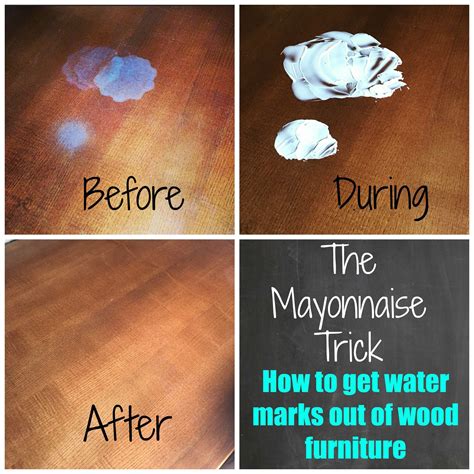How to Get Water Stains Out of Wood: A Comprehensive Guide
Water stains on wood are a common problem, but thankfully, they're often fixable! Whether it's a minor blemish or a more significant discoloration, this guide provides effective methods to restore your wooden surfaces to their former glory. We'll cover various techniques, from simple household remedies to more advanced restoration methods, ensuring you find the perfect solution for your specific situation.
Understanding Water Stains
Before diving into solutions, it's crucial to understand what causes water stains. Water penetrates the wood's surface, raising the wood grain and often causing discoloration. The severity of the stain depends on several factors, including the type of wood, the duration of the water exposure, and the wood's finish. Darker woods tend to show water stains more prominently than lighter woods.
Types of Water Stains:
- Surface Stains: These are often lighter and only affect the wood's surface. They're usually easier to remove.
- Deep Stains: These penetrate deeper into the wood, resulting in more significant discoloration. These require more intensive treatments.
Effective Methods for Removing Water Stains
Here are several methods to tackle water stains, ranging from simple to more advanced:
1. Simple Cleaning Methods:
- Mild Abrasion: For minor surface stains, gently rub the affected area with very fine steel wool (0000 grade) or a soft cloth dampened with mild dish soap and water. Always test any cleaning solution on an inconspicuous area first. Rinse thoroughly with clean water and dry immediately.
- White Vinegar: Mix equal parts white vinegar and water. Apply the solution to the stain with a soft cloth, gently rubbing in the direction of the wood grain. Wipe clean and dry immediately. Vinegar's acidity can help lift the stain.
2. Intermediate Methods:
- Oxalic Acid: Oxalic acid is a more potent stain remover, effective against deeper stains. Always wear gloves and eye protection when using oxalic acid. Follow the manufacturer's instructions carefully. Apply the solution, let it sit for the recommended time (usually a few minutes), then rinse thoroughly and dry.
- Hydrogen Peroxide: This is a natural bleaching agent that can lighten water stains. Apply a small amount of 3% hydrogen peroxide to the stain with a cotton swab. Let it sit for a few minutes, then wipe clean and dry. Test on an inconspicuous area first.
3. Advanced Methods (For Severe Stains):
- Wood Bleach: For stubborn, deep stains, a wood bleach might be necessary. This is a stronger chemical solution and should be used as a last resort. Always follow the manufacturer's instructions meticulously, ensuring proper ventilation and protective gear.
- Professional Restoration: If you're dealing with antique furniture or highly valuable wood, it's best to consult a professional wood restoration specialist. They have the expertise and tools to handle delicate restoration work.
Preventing Future Water Stains
Prevention is always better than cure! Here are some tips to prevent water stains from occurring:
- Use Coasters: Always use coasters under drinks and wet items to protect your wooden surfaces.
- Immediate Cleanup: Wipe up spills immediately to prevent water from seeping into the wood.
- Regular Maintenance: Apply a protective finish like wax or varnish to your wooden furniture to create a barrier against water damage.
Conclusion
Removing water stains from wood requires patience and the right approach. By starting with gentle cleaning methods and progressively using stronger solutions if necessary, you can effectively restore your wooden surfaces to their original beauty. Remember to always test any cleaning solution on a hidden area first and to use appropriate safety precautions when handling chemicals. With careful attention and the right techniques, you can keep your wood looking its best for years to come.
